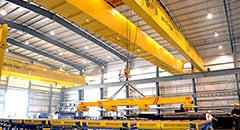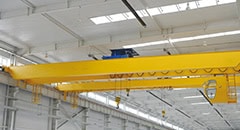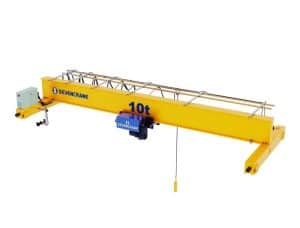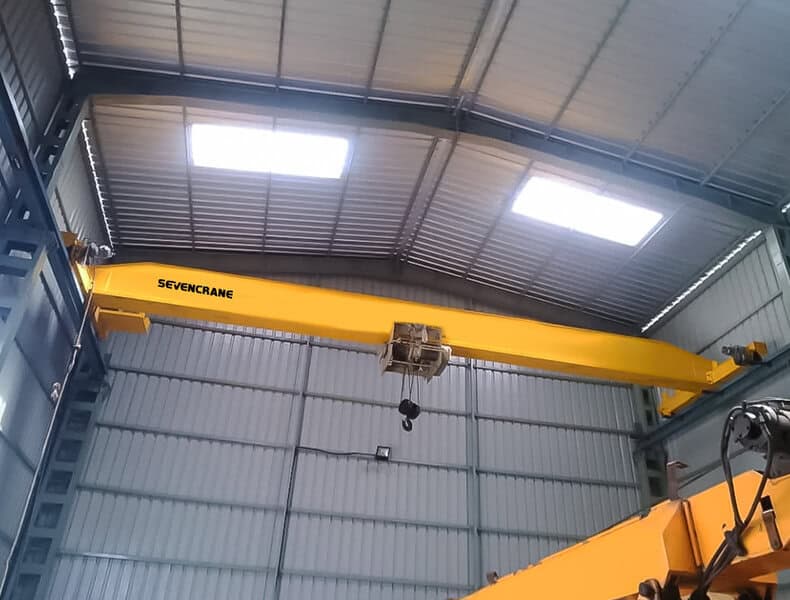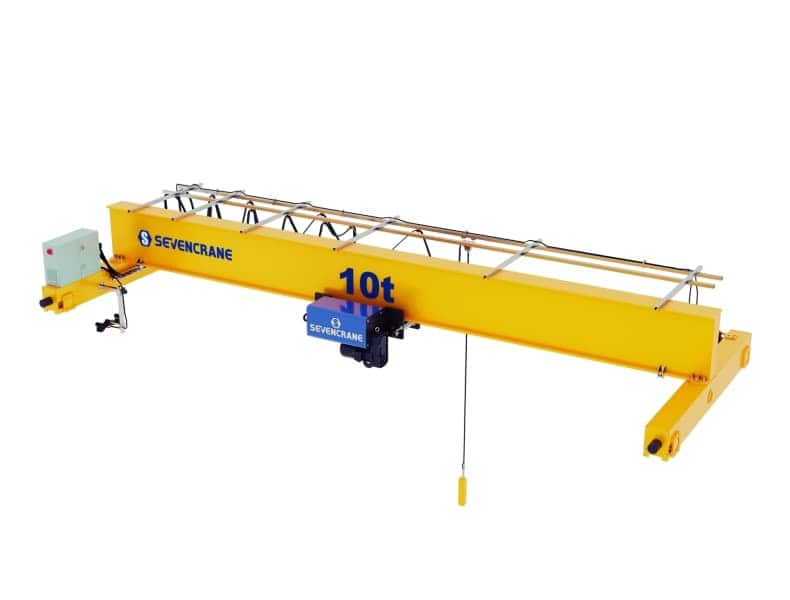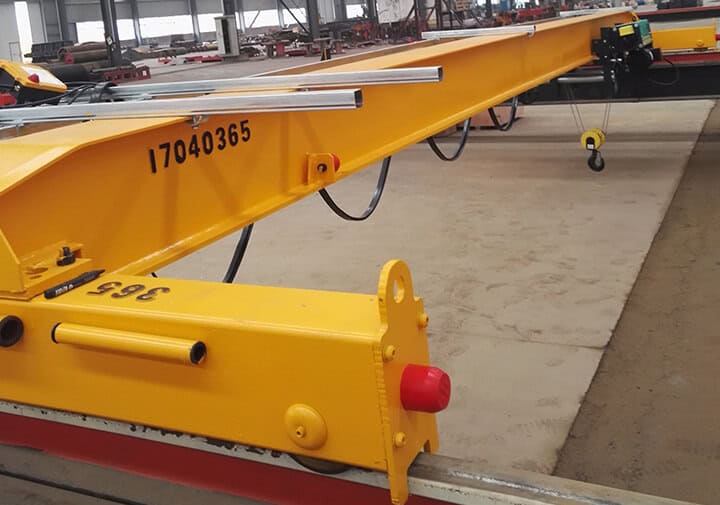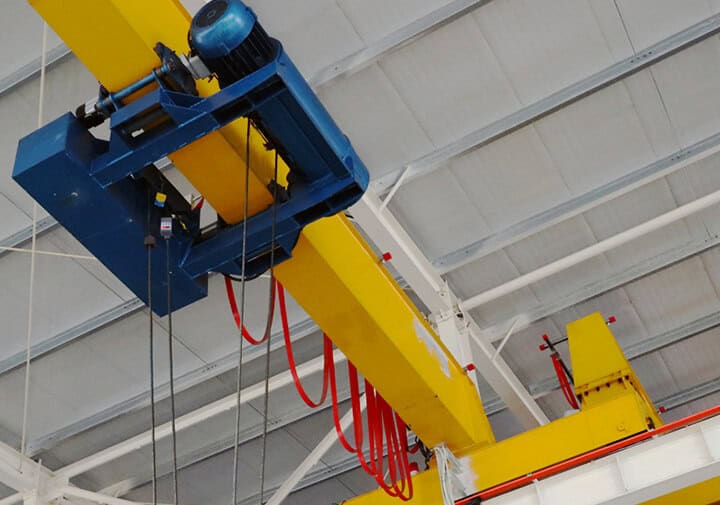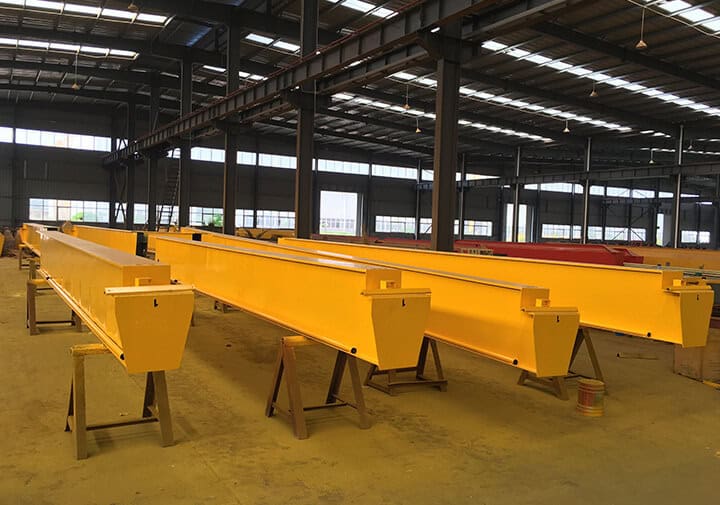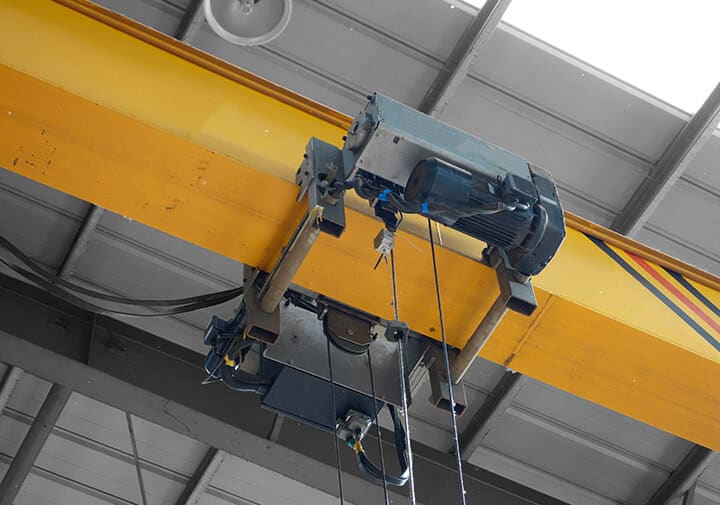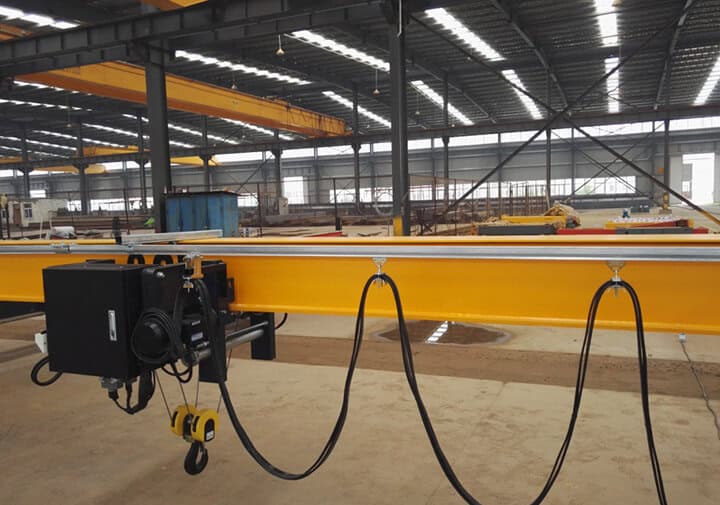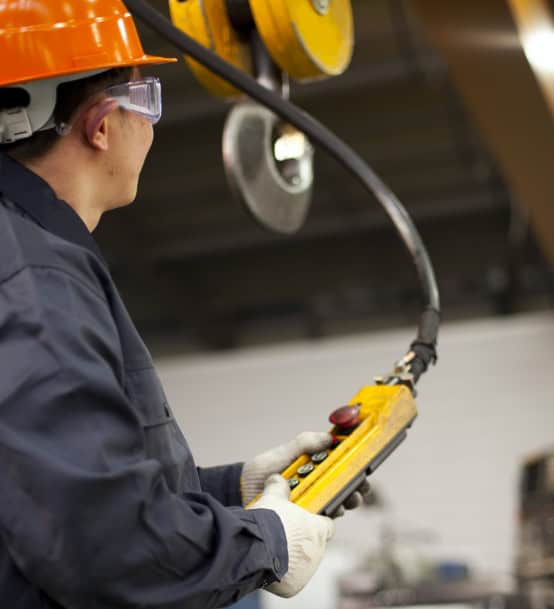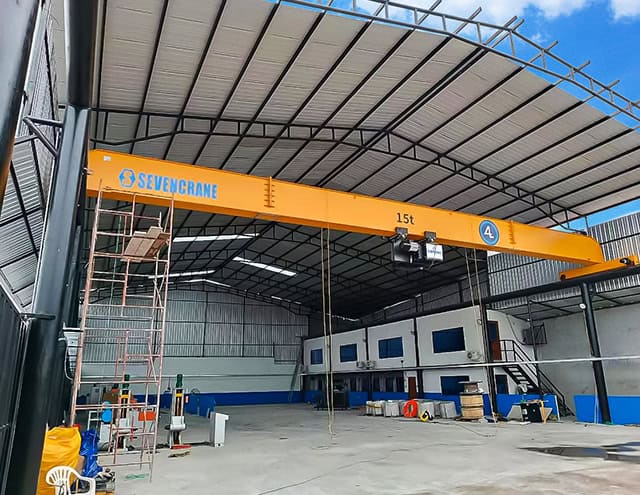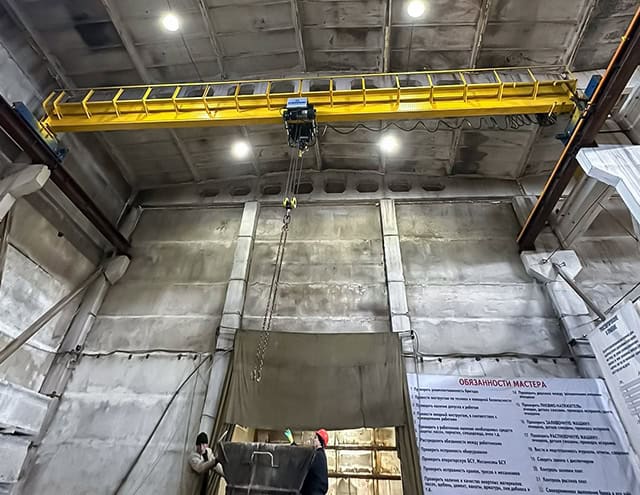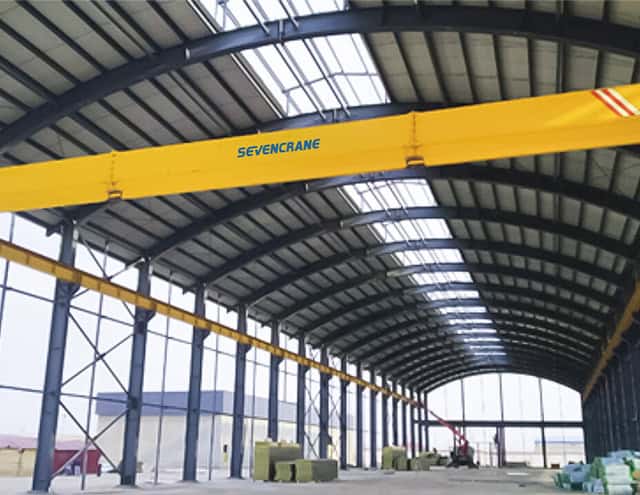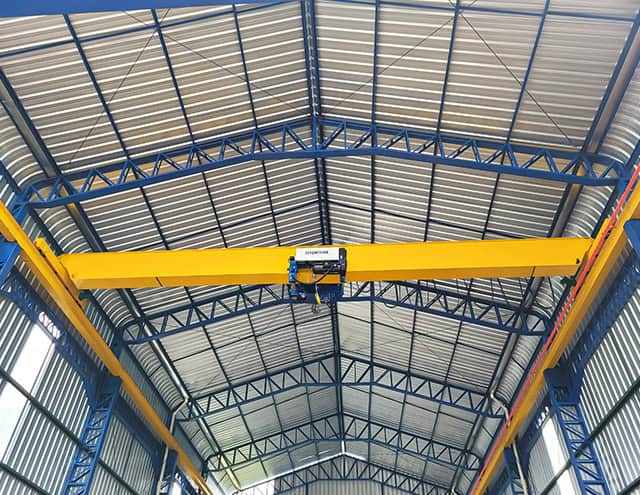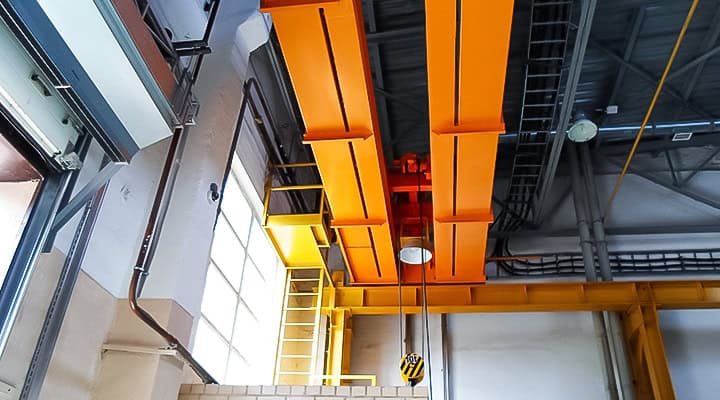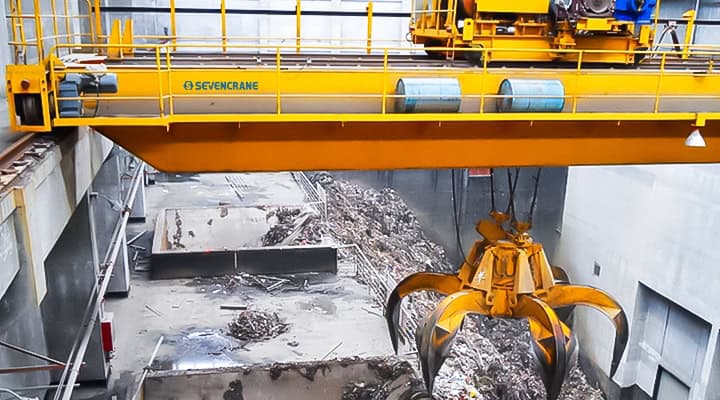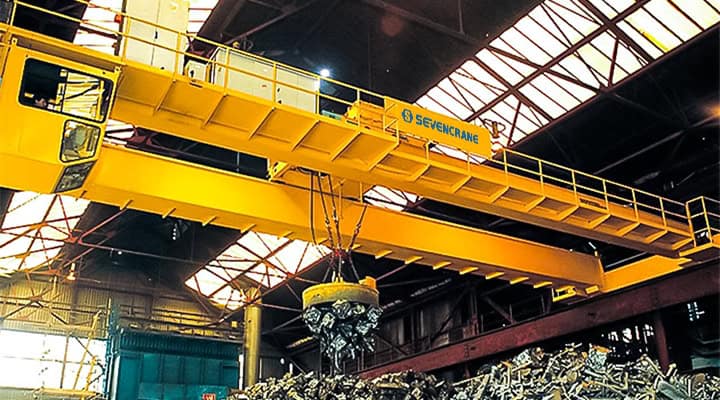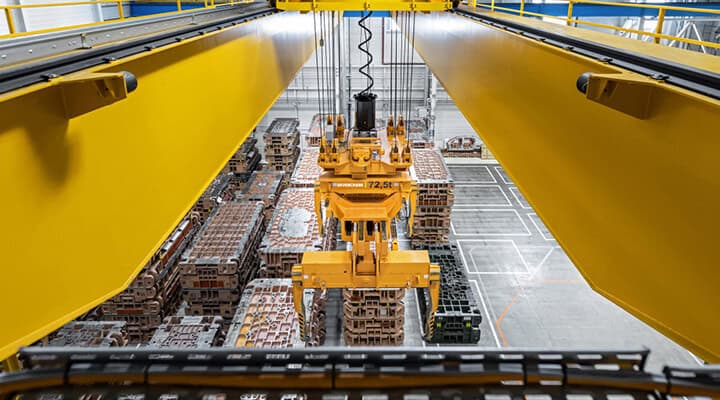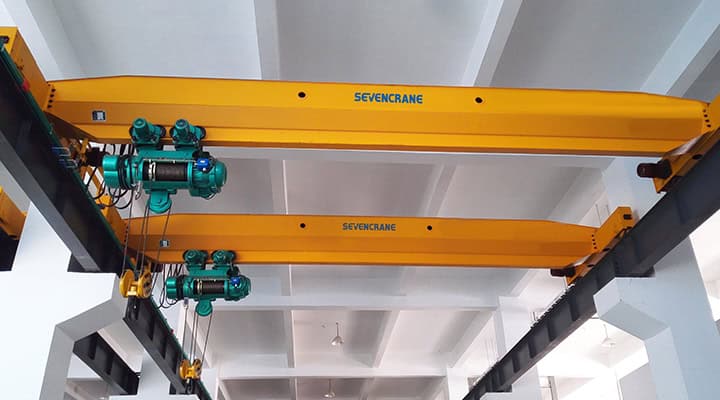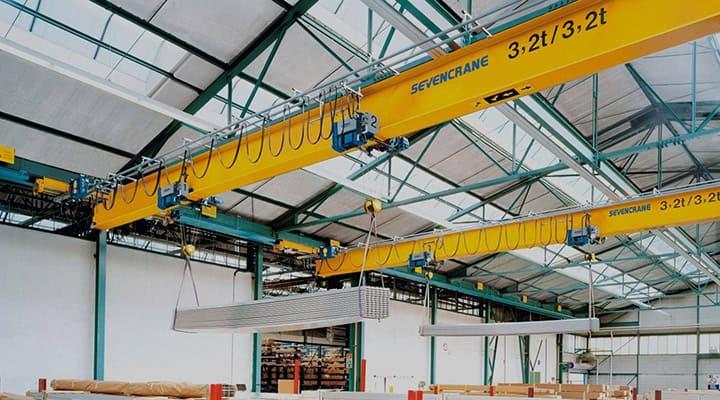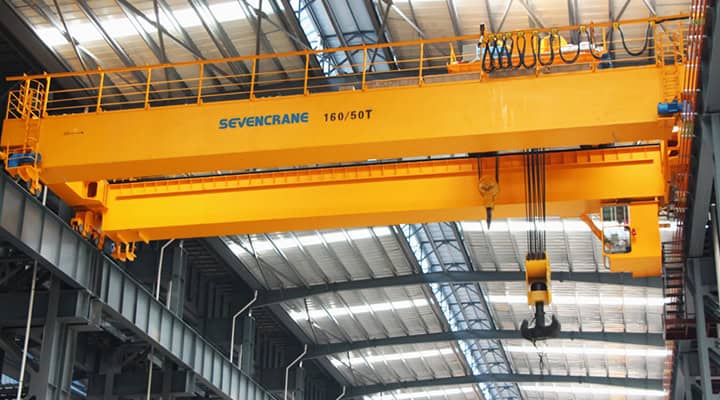The single girder overhead crane is an efficient lifting equipment designed according to international standards (DIN, FEM, ISO). The crane is characterised by high rigidity, light weight and excellent structural design, which saves space and investment costs. single girder overhead crane is suitable for a wide range of industrial environments and provides reliable material handling solutions.
Product composition(The main components of single girder overhead crane include):
- Main beam
- End beam
- Lifting mechanism: electric hoist, hand hoist
- Electrical equipment
- Hook (grab bucket, sling, lifting clamp, electromagnet, etc. can be selected)
- Various safety devices (such as buffer, limiter)
*These parts can be provided separately, so that customers can choose and configure according to their needs.
Control methods (provides multiple control methods to meet different operation requirements):pendant control,remote control,cabin control
These control methods make operation more flexible and convenient, and improve work efficiency.
Advantages:
- The design complies with FEM/DIN standards to ensure high performance and safety of the product.
- Small size, light weight, optimized design concept makes the hook minimum distance from the wall, low clearance height, and large lifting height.
- Reduce wheel pressure, save construction investment and maintenance costs.
- Easy to install, operate and maintain, widely used in workshops, factories, warehouses and other places.
(These features make single girder overhead crane an ideal choice for customers pursuing high work efficiency if the budget allows.)
Applications:
Single girder overhead cranes are widely used in many industries and places, mainly in workshops, factories, warehouses, steel mills, material yards and cargo transportation centers. They are mainly used indoors, but can also be used in outdoor environments in some cases. Specific applications include material handling in industries such as machinery manufacturing, petroleum, petrochemicals, ports, railways, civil aviation, electricity, food, papermaking, building materials and electronics, and are especially suitable for occasions that require precise positioning and precision assembly of large components. The design and functions of these cranes make them indispensable equipment in modern industrial production, which can effectively improve work efficiency and safety.

